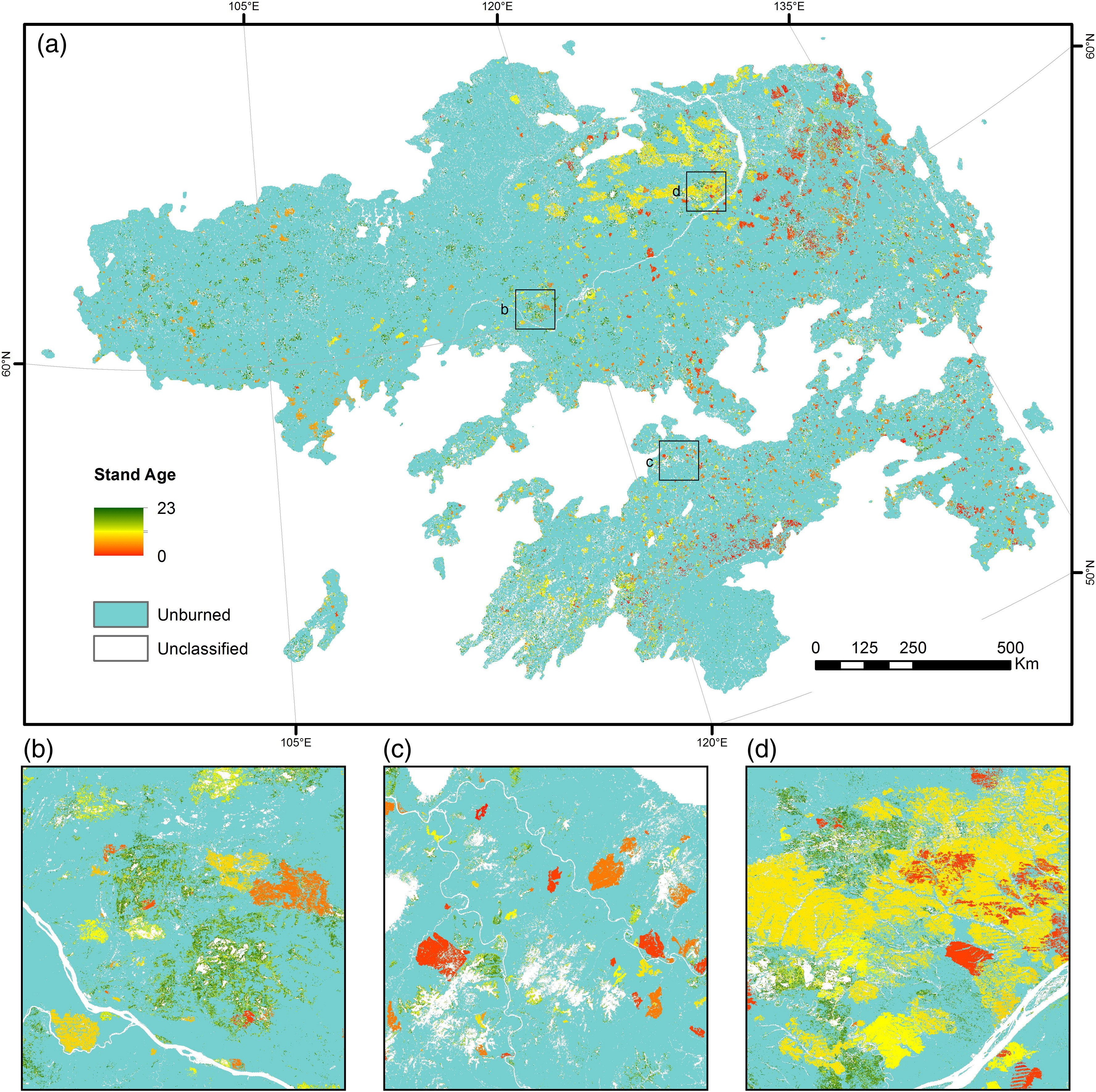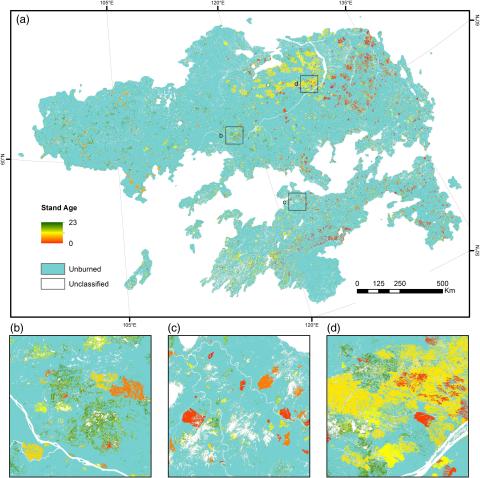Distribution of Siberian Larch and Estimated Stand Age Across Russia, 1989-2012
This data set provides mapped estimates of the stand age of young (less than 25 years old) larch forests across the entire range of Siberian larch from 1989-2012 at 30-m resolution. The age estimates were derived from Landsat-based composites and tree cover for years 2000 and 2012 developed by the Global Forest Change (GFC) project and the stand-replacing fire mapping (SRFM) data set. This approach is based on the assumption that the relationship between the spectral signature of a burned or unburned forest stand acquired by Landsat Enhanced Thematic Mapper Plus and Thematic Mapper sensors and stand age before and after the year 2000 is similar, thus allowing for training an algorithm on the data from the post-2000 era and applying the algorithm to infer stand age for the pre-2000 era. The output map combines the modeled forest disturbances before 2000 and direct observations of forest loss after 2000 to deliver a 24-year stand age distribution map.
Data Acknowledgements
Data Authors: Chen, D., T.V. Loboda, A. Krylov, and V. Potapov.
Data Set DOI: http://dx.doi.org/10.3334/ORNLDAAC/1364
Data center: ORNL DAAC
Sponsor: NASA EOSDIS


